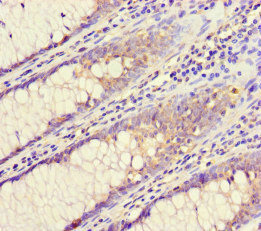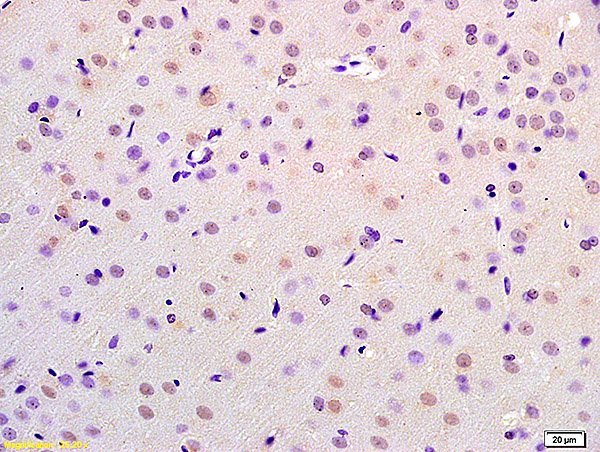
Immunohistochemistry of paraffin-embedded human colon cancer using CSB-PA853396LA01HU at dilution of 1:100
CHMP4C Antibody
CSB-PA853396LA01HU
ApplicationsELISA, ImmunoHistoChemistry
Product group Antibodies
ReactivityHuman
TargetCHMP4C
Overview
- SupplierCusabio
- Product NameCHMP4C Antibody
- Delivery Days Customer20
- ApplicationsELISA, ImmunoHistoChemistry
- CertificationResearch Use Only
- ClonalityPolyclonal
- ConjugateUnconjugated
- Gene ID92421
- Target nameCHMP4C
- Target descriptioncharged multivesicular body protein 4C
- Target synonymsSNF7-3, Shax3, VPS32C, charged multivesicular body protein 4c, SNF7 homolog associated with Alix 3, Snf7 homologue associated with Alix 3, chromatin modifying protein 4C, chromatin-modifying protein 4c, hSnf7-3, hVps32-3, vacuolar protein sorting-associated protein 32-3, vps32-3
- HostRabbit
- IsotypeIgG
- Protein IDQ96CF2
- Protein NameCharged multivesicular body protein 4c
- Scientific DescriptionProbable core component of the endosomal sorting required for transport complex III (ESCRT-III) which is involved in multivesicular bodies (MVBs) formation and sorting of endosomal cargo proteins into MVBs. MVBs contain intraluminal vesicles (ILVs) that are generated by invagination and scission from the limiting membrane of the endosome and mostly are delivered to lysosomes enabling degradation of membrane proteins, such as stimulated growth factor receptors, lysosomal enzymes and lipids. The MVB pathway appears to require the sequential function of ESCRT-O, -I,-II and -III complexes. ESCRT-III proteins mostly dissociate from the invaginating membrane before the ILV is released. The ESCRT machinery also functions in topologically equivalent membrane fission events, such as the terminal stages of cytokinesis and the budding of enveloped viruses (HIV-1 and other lentiviruses). Key component of the cytokinesis checkpoint, a process required to delay abscission to prevent both premature resolution of intercellular chromosome bridges and accumulation of DNA damage: upon phosphorylation by AURKB, together with ZFYVE19/ANCHR, retains abscission-competent VPS4 (VPS4A and/or VPS4B) at the midbody ring until abscission checkpoint signaling is terminated at late cytokinesis. Deactivation of AURKB results in dephosphorylation of CHMP4C followed by its dissociation from ANCHR and VPS4 and subsequent abscission (PubMed:22422861, PubMed:24814515). ESCRT-III proteins are believed to mediate the necessary vesicle extrusion and/or membrane fission activities, possibly in conjunction with the AAA ATPase VPS4. Involved in HIV-1 p6- and p9-dependent virus release. CHMP4A/B/C are required for the exosomal release of SDCBP, CD63 and syndecan (PubMed:22660413).
- ReactivityHuman
- Storage Instruction-20°C or -80°C
- UNSPSC41116161






